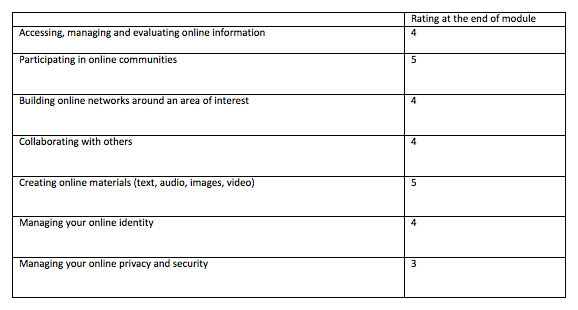
photo credit: Merrill College of Journalism Press Releases
By looking around your surrounding now, you’ll realise how easy it is to collect your personal data – especially online. It seems like the more connected you are with the rest of the world, the easier it is to capture your data.
Data on consumer insights can be collected through many forms, some of which you wouldn’t even have thought were a form of data collection. For example, through surveys, filling up forms, credit card transactions, shopping transactions (think Instagram shopping?), social media interactions, conversations on messengers, your online behaviour, etc.
The data collected will be analysed to better understand the environment or gather valuable consumer insights which can help marketers and companies make informed marketing decisions. As consumers’ demographics, traits, beliefs, attitudes, habits, etc. differ greatly from culture to culture or even from one individual to another, something that marketers want to constantly be on track with is targeting their consumers effectively (Patterson et al. 1997), ensuring that the right method is used on the right group/individual to satisfy their needs and wants. Presently, with the rise in free social network connectivity, everything you do online is saved and contributed to the world of big data (Perera et al. 2015).
Referring back to the previous blog post on consumers’ power, it was discussed that the users are actually working for social media companies as they release their personal information and customise their profiles accordingly. Think about it, all these personal information, photos and videos uploaded onto your profile are actually valuable data that is given away freely to the company! (Free labour + free data? It’s really amazing how the social media companies are able to make users do these on our own free will!)
Also, have you ever seen advertisements about products that you have recently looked at appear on a completely irrelevant website you are on, prompting you to purchase it? Together with many other instances online that makes your experience seamless and “coincidentally” convenient, that’s all the works of data too!
Since data is such a valued asset for companies especially in the 21st century, it is only natural that they go to extents to collect as much as they can from consumers, leading us to an issue that many are concerned about now – privacy issues.
No doubt government bodies across the globe have initiated campaigns to educate the public about protection of their privacy and passed laws to protect consumers (In Singapore’s context, the Personal Data Protection Act), this is still a pressing issue as the amount of data in the world is extremely large hence there is a limit to how much can be controlled. With the development of The Internet of Things (IoT), it poses as an even more problematic issue when discussing privacy as it produces a big amount of data (Pence 2015). The IoT connects people with things at any location, timing and possibly with any other object or device that holds the technology and sensors required (Perera et al. 2015) just to enhance a user’s everyday experience.
Looking at a micro level, the concern for data privacy seem to vary among groups. Redirecting back on my post about digital visitors or residents, it seems like the digital visitors are more likely to be concerned about their privacy issues while the digital residents have accepted the fact that their data is collected once they launch their browser. To put things into perspective, I compared what my parents would say to me about checking-in a location on Facebook as compared to what an 18 year-old will say about it – it is completely different, and almost the complete opposite.
Just awhile back while having a gathering with some of my friends here, a few of us in our early to mid 20s noticed that there is a growing trend among the younger group of us…
They track their friends’ location on mobile!
I don’t know about you, but the fact that they have accepted this as a norm really shocked us (This must be how our parents felt when they first heard about Facebook!). It works similar to a social media platform with a list of friends you add, and you basically track where they are real time. There are even notifications set to inform you that your friend is home!
For marketing, data relating to a person’s location is extremely important and precious for getting insights into understanding a person’s behaviour, routine and activities or places he/she is in, and also allows effective real-life targeting (Zafeiropoulou et al. 2012). Yet at the same time, there is a group of people who are giving away their location and information for free! One may argue that the data collected through the application is kept within it and probably will never be disseminated to third parties. However, will anything that is uploaded online ever be removed from the big data storage? Let alone information that is so crucial for companies?
To end it off, I find the endless possibilities of what an analyst can do with data fascinating, and whatever marketers do to easily retrieve data an innovative work of art. However, as people, it is important to know how to protect our privacy and secured information too.
References:
Patterson, M., O’Malley, L. & Evans, M., 1997. Database marketing: investigating privacy concerns. Journal of Marketing Communications, 3(3), pp.151–174. Available at: http://www.tandfonline.com/doi/abs/10.1080/135272697345943.
Pence, H.E., 2015. Will Big Data Mean the End of Privacy? Journal of Educational Technology Systems, 44(2), pp.253–267. Available at: http://ets.sagepub.com/lookup/doi/10.1177/0047239515617146.
Perera, C. et al., 2015. Big Data Privacy in the Internet of Things Era. IT Professional, 17(3), pp.32–39.
Zafeiropoulou, A.M. et al., 2012. Location data and privacy: a framework for analysis. R{é}seaux Sociaux: Culture Politique et Ing{é}nierie des R{é}seaux Sociaux, pp.185–200. Available at: http://eprints.soton.ac.uk/273140/.

















